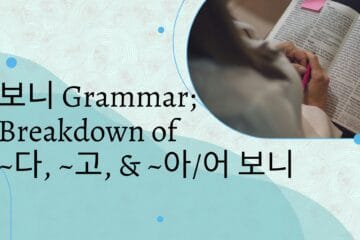One thing about Korean many people struggle with is the dynamics between people and speech. For native English speakers; especially if English if your only language, honorifics/formalities is something that doesn’t exist to a quarter of the extent as in Korean. Korean is a culture based highly around respect and knowing or understanding you position and others.
For beginners I would typically recommend just sticking with the polite 요 form as that is safe and pretty easy to understand but to truly speak with Koreans and integrate you need to understand the levels of Korean formalities and how, when, and where to use them.
 Art by pikisuperstar / Freepik, Design by koreanling
Art by pikisuperstar / Freepik, Design by koreanling
Quick Breakdown of Korean Formalities
존댓말
polite formal 하십시오체
- used with people older/above you hierarchically
- especially used with clients, business partners, customers, etc. – people to show respect to
- used by news broadcasts and reporters
- ~ㅂ니다
- ex; 합니다, 하십니다
polite informal 해요체
- most common and safest speech to use; when you don’t know the person/your relationship
- tv show hosts use it
- more common with younger generations
- ~아요/여요/어요
- ex; 해요, 하세요
반말
impolite formal 해라체
- sort of plain text used in magazines, books, newspapers, songs, etc.
- ~다/ㄴ다/는다
- ex; 한다, 하신다
impolite informal 해체
- used with friends, family, people of lower status, or younger than you
- ex; 해, 하셔
There’s also other speech forms but they are mostly unused so you can get away with ignoring them. Though you can find them in Korean shows or movies set in ancient times, so if historical and dynasty dramas (such as Hwarang, Moon Embracing The Sun, Mr. Sunshine, and more) are some of your favourites it can be fun to look into them more to watch those shows much easier!
- 하소서체 – for royalty and religious contexts, you might see it in churches or bibles and some historical dramas but that’s it
- 하오체 – old casual form, might see it in historical dramas as well and for a period it was used online? like 해요체 you stick 오 at the end
- 하게체 – in-between 반말 and 존댓말, only really used by people 60+
I want to breakdown my image above for everyone really quick, it shows 4 levels between an elder, adult, teen, and kid and how each will communicate with each other! The ages are approximate, but this is generally how people speak for the 4 main age groups (also not just women of course! just the look I went with).

Elders (65+)
Between other people on the older generation they can be either formal or informal depending on the relationship but when an 할머니/할아버지 speaks to anyone younger it’s unlikely they will use anything other than 반말. More than age it would depend on someone’s position; such as a politician, or other well respected person they might use 존댓말 to be humble or they might not. Many Korean elders don’t care about someone’s position and will talk to anyone younger the same though haha.

Adults (30-65)
Adults will use a mix of formal and informal language, with other adults same as any other age group it can depend on position, age (even a year or two older or younger will change how people speak) and how close they are. People will use 존댓말 more than elderly people, especially in relation to work; someone higher in their company or field, or with more experience could warrant 하십시오체 usage. While with teenagers and kids of course they will keep it informal.

Teenagers/Young Adults (13-30)
Teens match with adults pretty well; using 해요체 form or 하십시오체 with people older, mix of 존댓말 and 반말 with their peers, and 반말 with children. They will use 존댓말 more often though; with seniors on school or university, teachers, boss at a part-time job, etc. Young adults are more likely to use 해요체 throughout daily life because its a more popular speech form for them as compared to older adults.

Kids (13-)
Kids are a special case, depending on their age they might mess up or ignore formality and honorific rules at all. Many young kids will use 반말 with their parents or other family members and then grow out of it as they learn more Korean and grow older. Old enough kids will typically keep to 해요체 form with people older but could use 하십시오체 potentially depending on the child.



2 Comments
keat · December 12, 2024 at 7:35 am
Very nice post. I just stumbled upon your blog and wanted to say that I’ve truly enjoyed surfing around your blog posts. After all I’ll be subscribing to your rss feed and I hope you write again soon!
Beary · May 12, 2023 at 7:36 pm
love the images! they help a lot